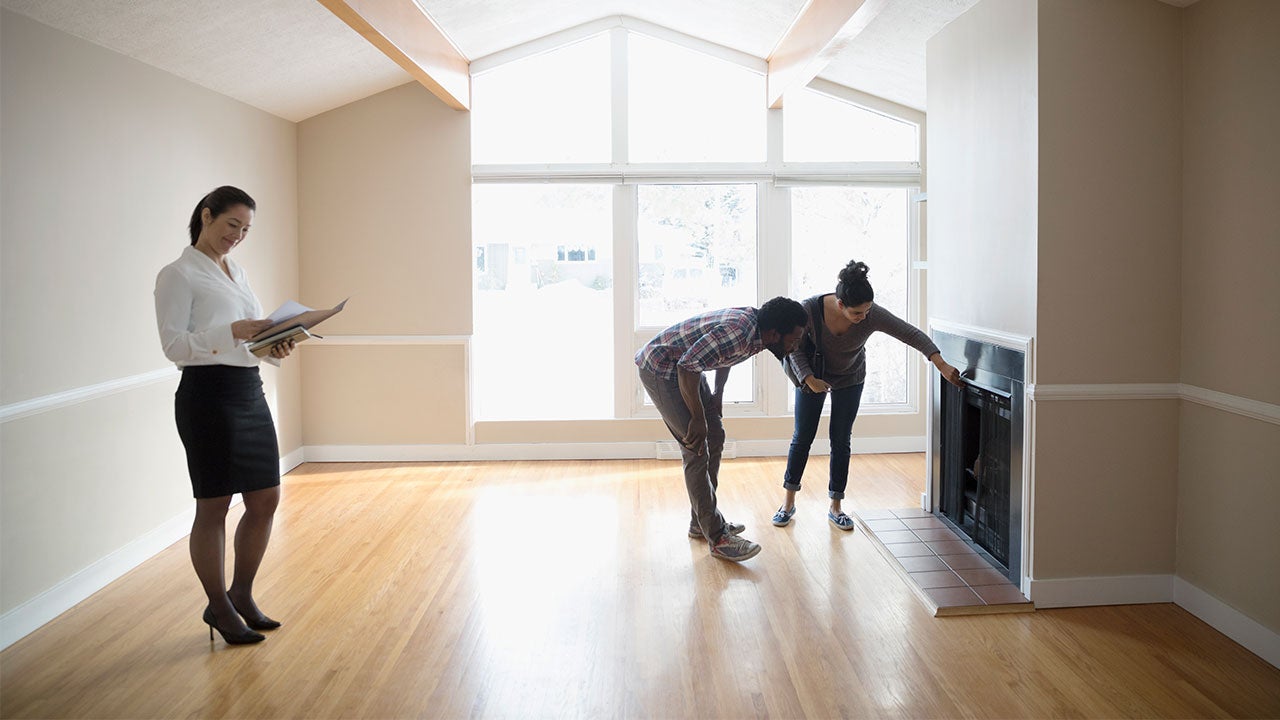Homebuying checklist

Buying a home can be one of the most complex financial undertakings of your life. Clarifying expectations and preparing your paperwork in advance can help to keep the process streamlined and on schedule. This homebuying checklist serves as a useful guide — follow along with each step to better navigate the experience of buying a house.
Getting your finances in order
First things first: Before you can buy, you need to know how much house you can actually afford. Bankrate’s new-house calculator can help you run the numbers and calculate how much you can comfortably spend on a home without spreading yourself too thin.
Don’t forget about your credit score: This number will play a big role in what kind of interest rate a mortgage lender is willing to offer you. The higher your score, the lower the rate you’re likely to qualify for — which can save you thousands of dollars over the course of the loan. If your credit score is not as high as you’d like, it might be worth taking some time to improve it before you apply for a mortgage.
Finally, keep tabs on your savings to make sure you have enough to cover the down payment and closing costs on a home purchase. A traditional 20 percent down payment can feel out of reach for many buyers — 20 percent on a $300,000 home is $60,000, a big amount to pay upfront — but many loans accept a much lower percentage.
Find a local real estate agent
It can pay to have the right help. An experienced real estate agent in your area will have expert insight into the local market and can help pinpoint the right listings for your needs. Agents are also a wealth of information when it comes to exploring new neighborhoods and different types of homes that you might not have discovered on your own. And their negotiation skills can save you money when it comes time to make an offer.
Working closely with an agent will ensure you have an advocate by your side throughout the buying process. Be sure to interview several people to find a good fit. You will want someone who you’re comfortable working with and who is attentive to your priorities.
Find a mortgage lender and get preapproved
Getting preapproved for a mortgage will put you in a better position to start your home search. The reason is twofold: One, preapproval gives you a firm idea of how much a lender will be willing to loan you, which helps you set a realistic price range. And two, it makes you more appealing to sellers because they can feel more sure of your financial fitness. This is especially true in competitive markets where there might be multiple bids on a property — a bidder with preapproval will be a more attractive candidate than one without.
To get preapproved, you will need to show proof of income and provide a variety of financial documents. But don’t confuse preapproval with final approval — once your offer is accepted and you go into contract, you’ll have to apply for an actual mortgage, which is a more in-depth process. You aren’t obligated to use the same lender, though, so shop around to find the best deal you can.
Start looking for your ideal home
Now comes the fun part: house-hunting. You probably already have an idea of where you want to live, so consider your preapproval amount and consult with your agent about what you can afford in your desired area. Of course, where you want to live does not always match up with where you can afford to live: You may end up expanding your search parameters if you find you can buy significantly more house in a different neighborhood.
Create a list of non-negotiable must-haves, plus things that would be nice to have but aren’t necessarily deal-breakers. Think about what factors are most important to you, whether it’s yard size, location, school district or commuting distance. Let your agent guide you: They will have a good handle on what’s available in your area, and what’s available nearby if you’re willing to look a bit farther out.
Make an offer
Once you’ve found a home that meets your needs, falls within budget and checks the necessary boxes on your wish list, it’s time to make an offer. Your agent will help you come up with the right price to bid by analyzing local comps, or similar nearby homes that have sold recently. They can also advise you on possible concessions to ask for and counter-offer tactics, if necessary.
When you have an offer accepted, your agent will also help ensure that the contract contains the proper safeguards and contingencies to protect your interests. And you will likely need to provide an earnest money deposit, typically around 1 percent of the purchase price, which will be held in escrow and put toward the purchase when you close.
Get a home inspection and appraisal
The home inspection and home appraisal are crucial steps for buyers, and both can make or break a deal. Both involve a professional visiting the property for an in-person evaluation, but they’re evaluating for different things: A home inspector is looking for safety and structural issues, while an appraiser is determining the home’s market value.
The appraisal is likely to be mandatory, required by your mortgage lender to ensure they’re not lending more than the home is worth. Home inspections, however, are not mandatory — but it’s smart to get one to make sure you understand any potential problems, or to catch a minor issue before it becomes a major one. Any problems discovered in the inspection can also be used as negotiation points.
Close on the house
Closing is the final step in a real estate transaction. This is when you will sign all the legal documents, pay all the closing costs and, eventually, get the keys to your new home. Before you close, be sure to secure a homeowners insurance policy — most mortgage lenders will require one.
Purchasing a home can be daunting and even stressful. Remember that your real estate agent is there to help you each step of the way, from the first open house visit right through to closing day. Once you’ve signed the last form and written the last check, grab those keys and enjoy your new home!
FAQs
-
Traditionally, the down payment is 20 percent of the purchase price. But, while this is still the threshold to avoid having to pay private mortgage insurance, you don’t necessarily need to put 20 percent down. Many loan types have much lower down payment minimums, if you qualify. However, keep in mind that the more you are able to put down upfront, the less you will have to borrow, which saves you a lot of money in the long run.
-
The 28/36 rule is a common guideline to help determine how much home you can reasonably afford (after you’ve paid the down payment and closing costs). This rule of thumb recommends that you spend no more than 28 percent of your gross monthly income on housing costs, and no more than 36 percent on all of your debt combined, including those housing costs. For example, say you make an annual salary of $100,000 per year. That breaks down to $8,333 per month, and 28 percent of that is $2,333 — so you ideally should not spend more than $2,333 per month on your mortgage payments.
-
No, it’s not a requirement. But buyers’ agents are licensed professionals whose entire job is to put you in a new home that you both love and can afford — they know everything about their local market and put that expertise to work for you. Having one in your corner makes the homebuying process easier, and the road to closing smoother.
You may also like

Florida housing market: Everything you need to know

The final walk-through: Top tips for homebuyers




